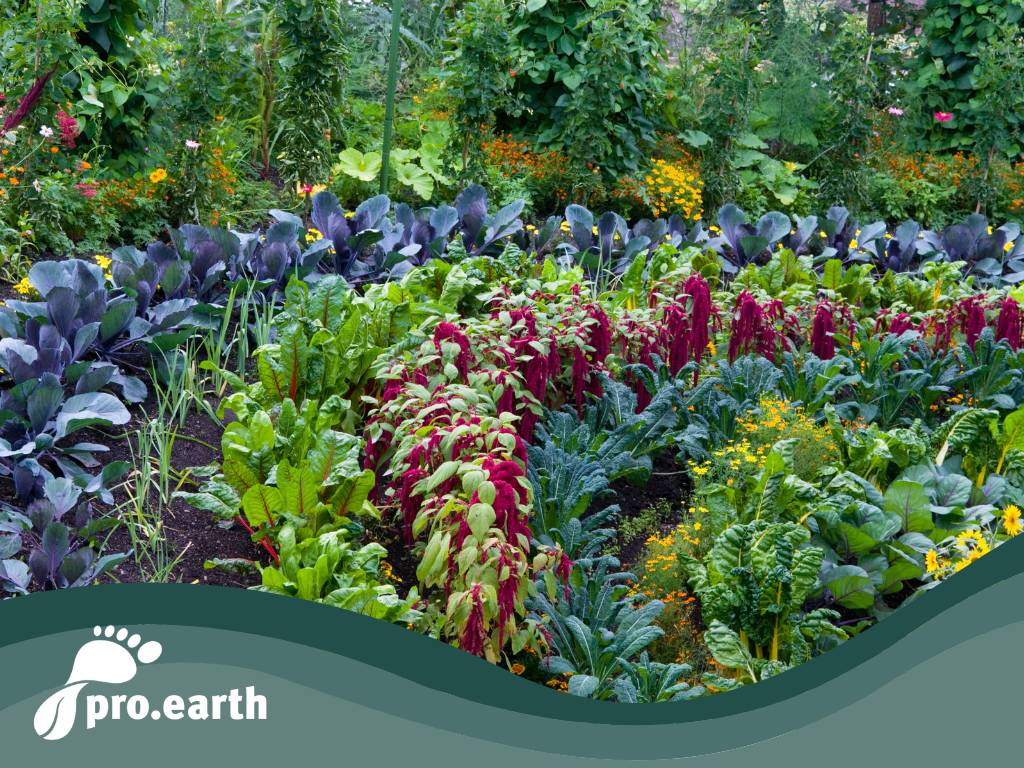The path to a self-sufficient garden

The advantages of (partial) self-sufficiency are obvious. You know what you are eating. You always get seasonal, regional fruit and vegetables. You learn to appreciate the produce much more through your work and can pass this on to the next generation. You connect more strongly with the soil and life in the cycle of the year. Learn how to deal with failure, look for new solutions and practise patience. You learn the benefits of long-term planning and which plants like each other and which don't.
Prices are rising and the quality of produce is often so lálá, so many people want to grow fruit and vegetables in their own garden and provide for themselves. We #Beetschwestern have therefore looked into the subject and today we want to give you a brief overview of this very broad topic. There are many books on self-sufficiency in the literature for all those who want to take a closer look.
How much space do I need for a self-sufficient garden?
- For partial self-sufficiency, you need around 25m2 per person
- With 70 m2 per person, you can already cover a large part yourself
- For complete self-sufficiency in fruit and vegetables, you need to reckon with around 160 m2 per person, of which around 100 m2 is for fruit
You could then add chickens, bees and perhaps mushroom cultivation .... . Permaculture often allows the land to be used better because it can be used several times. There is also a lot of literature on this subject.
There are also urban farms on rooftops, so you don't necessarily need a garden.
The most important tips
- The soil is the key. The composition of the soil is a decisive factor. There are many soil aspects that determine how much water the soil stores, how healthy the soil life is and whether or not many weeds grow. More and more people who are concerned with this believe that the topsoil and its organisms should be left alone, i.e. not dug up. You can find out more about this at wurzelwerk.net. We ourselves created a back-friendly no-dig bed last spring, in which cardboard is laid out on the ground and then covered with a layer of good soil enriched with compost around 25 cm high. You should also think about producing your own compost. And don't forget: mulch, mulch, mulch!
- Water is another decisive factor. In principle, our aim as natural gardeners must be to ensure that our garden requires as little water as possible. And if we do use water, then rainwater wherever possible, as this is much better for the plants and also cheaper.
- Create a planting plan. This may be a little tedious at the beginning, but it helps us to structure the self-sufficient garden well, to plant the right plants next to each other (in permaculture also with and on top of each other) and to plan the yield sensibly throughout the year. It also makes sense to include beneficial plants and flowering plants in the planning and to combine plants that feed differently. The more variety, the less damage pests can cause. With a cold frame or small greenhouse, you can expand your potential range and cultivation times.
- Patience. We advise you to work in manageable steps and not take on the whole project in one go. Start with good planning and define feasible sub-steps so that you don't overwhelm yourself and then give up because you feel like the project is getting out of hand. Be patient with yourself and nature and allow for mistakes, as we often learn important information from them. Trial and error is part of it! And harvesting our own produce and processing it in the kitchen gives us a wonderful feeling and compensates us for the effort.
Have fun planning and planting your self-sufficient garden! Your #Beetschwestern
https://news.pro.earth/2022/10/18/tipps-fuer-die-gestaltung-eines-permakultur-gartens/






